Kabir has spent the past few months running. Every morning, before the California sun begins to glare on the cracked sidewalks, he slips on his shoes and bolts out the door. The run, he says, is what keeps him sane. “It’s the only time I can make a plan. What to say to the lawyer. Which papers to organise. Who to call for help.” How not to fall apart.
Kabir (name changed on request), who had arrived from Pune to study at the University of California, had his student visa revoked along with thousands of others across the country. The email had come without warning. It had given him no time to prepare. Just a sudden vanishing of the ground beneath his feet. He hasn’t stopped running since. “I got this news on April 2, just a day after Eid. I had wanted to go home, but couldn’t in these circumstances,” he says.
And now, it may be a long while before he can. His Eid kurta and suit are still on the hanger, waiting to be worn. His apartment still carries the remnants of a celebration that didn’t last. A few half-deflated balloons cling to the ceiling — a bittersweet memory, as just a few days before his visa revocation, he had won the H-1B lottery (a random selection process by which a limited number of H-1B visas are allotted every year).
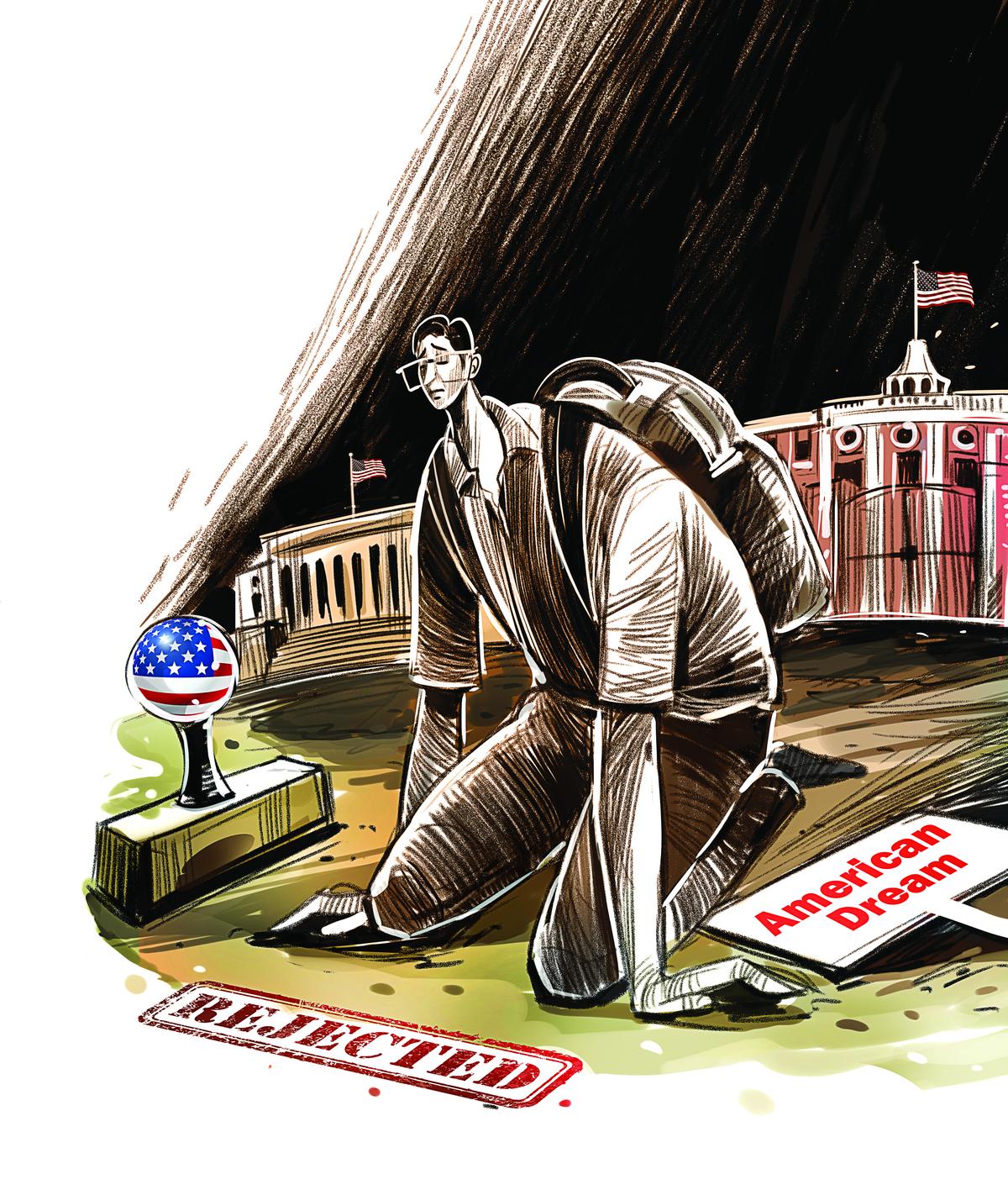
Many Indian students have been targeted as a part of the Trump administration’s actions against universities and immigrants.
| Photo Credit:
Illustration: Saai
In the weeks that followed, Kabir’s days became a blur — mornings on the pavement, afternoons in legal and immigration offices, evenings in community centres where other students like him sat huddled on plastic chairs, comparing legal notes, wondering what they had done wrong. Each time, the same questions, the same uncertainty, hung like static in the air.
“I run, I walk, I travel. Anything to escape my thoughts,” says Kabir. And yet, they are everywhere. In the faces of the other students who are caught in the same dragnet. In a mural stretched across a wall in Los Angeles that says, ‘My brother and I are my parents’ American Dream.’

A mural in Los Angeles that says, ‘My brother and I are my parents’ American Dream.’
In the eye of the storm
Kabir’s story is not his alone. Thousands like Kabir have been left in limbo, their futures upended by the shifting tides of immigration law and political mood in the United States.
In March, the Trump administration announced that it was cancelling $400 million in federal funding for Columbia University “due to the school’s continued inaction in the face of persistent harassment of Jewish students” and other alleged violations. Similar action was also directed against other Ivy League institutions such as Cornell, UPenn, Harvard, Brown, and Princeton.
More than 1,800 students from nearly 250 colleges in the U.S. have had their visas revoked and their SEVIS records terminated without notice or due process.
The American Immigration Lawyers Association estimates that 50% of those affected are from India.
“We are seeing many Indian students being targeted: Megha Vemuri and Prahlad Iyengar of MIT, Ranjani Srinivasan of Columbia, Badar Khan Suri of Georgetown University. This has had a chilling effect on the psyche of Indian students. They are carrying passports from the dorm to the classroom, which is not something typical. They are having conversations around what to do if ICE [Immigration and Customs Enforcement] shows up on campus,” says Akil Kasubhai, an alumnus of the University of Michigan and co-president of SAATH, a community that empowers South Asian youth to drive political change.
What began as visa revocations of students who participated in or supported pro-Palestine protests had metastasised by April. Suddenly, hundreds of international students had their visas revoked. Denying student visas based on social media vetting is the latest step in this quickly unravelling saga.
Rohan Soni, an alumnus of Columbia University and co-president of SAATH, says it is unfortunate that Indian students are targeted when they really just want to focus on their education. “Most Indian students are quite reserved when it comes to politics. They keep a low profile so that they can get their degrees, join the workforce, and make a better life for themselves,” he says.
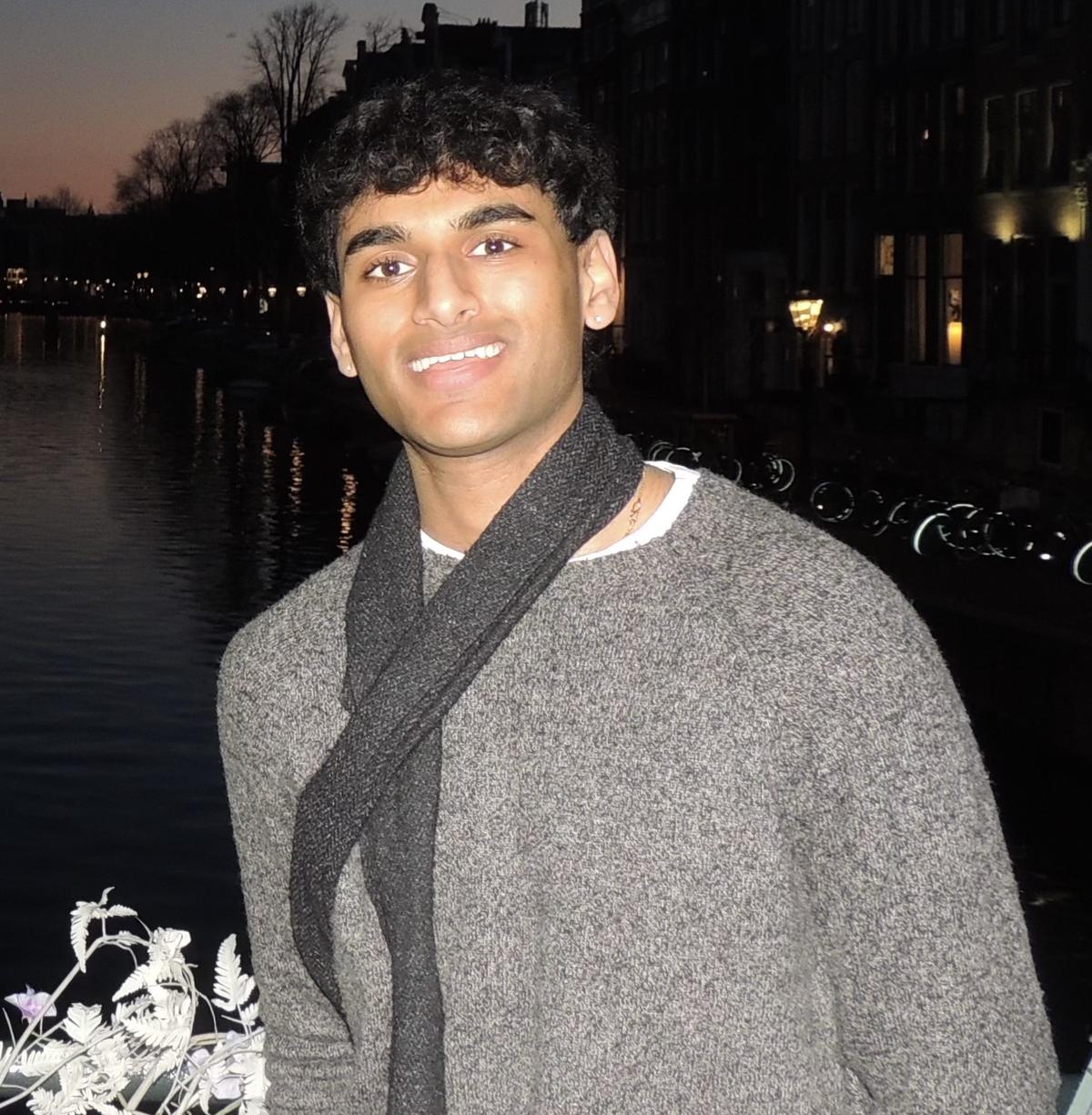

“We are seeing many Indian students being targeted. This has had a chilling effect on their psyche. They are going from dorm to classroom carrying their passports.”Akil KasubhaiUniversity of Michigan alumnus and co-president of SAATH
A larger ideological campaign
The Trump administration’s move to ban international students has been unfolding alongside a systematic rollback of diversity, equity, and inclusion (DEI) programmes across the country.
In January 2025, an executive order directed all federally funded institutions to terminate all race- or gender-based diversity programmes, claiming they were in violation of meritocratic ideals and civil rights law. Soon after the order, the Department of Education launched investigations into 45 colleges for “race-exclusionary practices”. The Department of Homeland Security also imposed stricter limitations on student visas: narrower Optional Practical Training (OPT) eligibility, intensive background checks, and increased scrutiny of STEM graduates, most of whom are from countries like India and China.
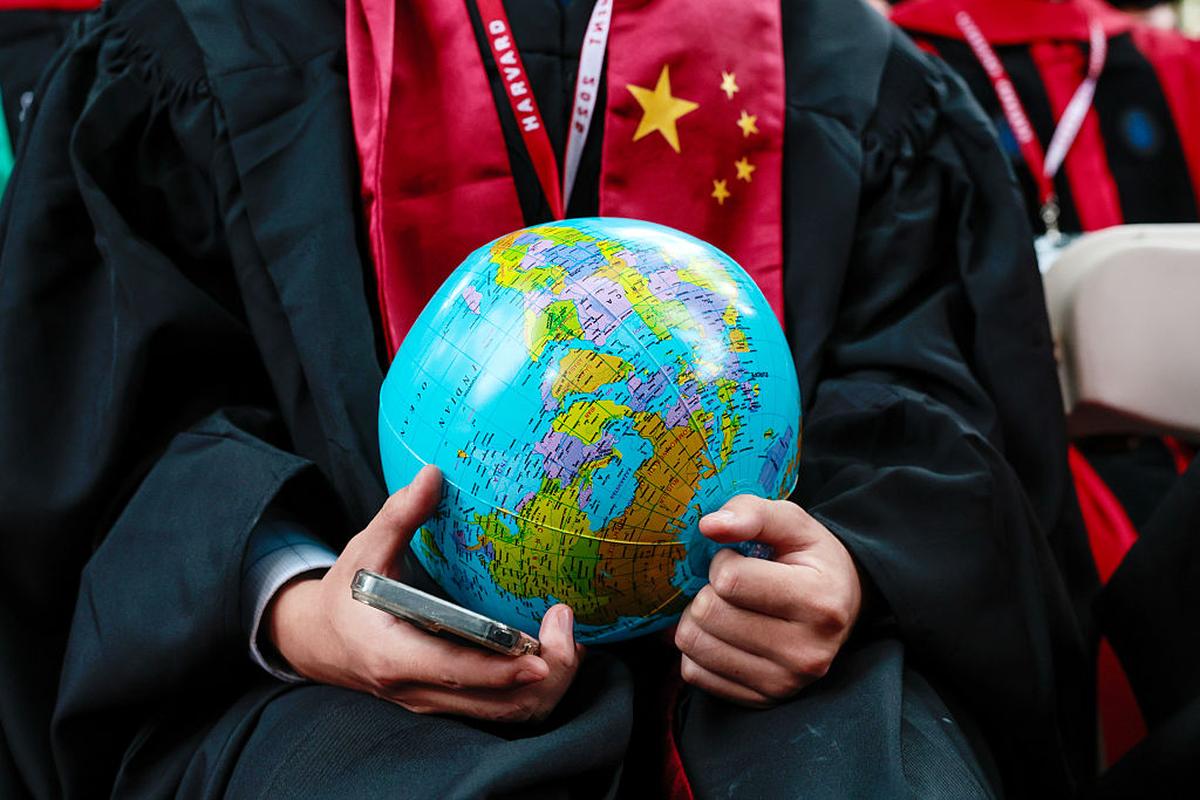
Solidarity with Harvard
The cloudy skies on Harvard’s graduation day on May 29 were not new for Boston summer. But the bright blue globes held against the darkening sky were. These globes belonged to Harvard graduates who had raised them as a sign of solidarity with the international student body at the institution. Alan Garber, president of Harvard, echoed the sentiment as he opened his speech: “To the class of 2025, from down the street, across the country, and around the world. Around the world — just as it should be.”
As his words drew a standing ovation, just eight kilometres away, a judge was working to extend a court order allowing Harvard to enrol international students. Only a week earlier, on May 22, the Department of Homeland Security had revoked that ability. This had come on the heels of billions frozen in funding by the government and threats to strip Harvard of accreditation and tax-exempt status. The administration cited concerns over campus activism and alleged antisemitism.
Even as Harvard fought back, arguing that these were retaliatory moves undermining institutional autonomy and academic freedom, Trump issued another proclamation on June 4 barring Harvard-bound international students for six months. This time, when the federal judge granted a temporary restraining order to halt enforcement, she also acknowledged “immediate and irreparable injury” — a phrase that is more than just legalese for the thousands of international students caught in the dragnet.
According to the Community Explainer by the South Asian American Policy Working Group, a network of organisations that address policy issues affecting South Asian communities, “More than 1,800 students from nearly 250 colleges have had their visas revoked and their SEVIS records terminated without notice or due process. Only about half of them received actual notice of their visa revocations, so many might not even be aware of their visa termination.” SEVIS, or the Student and Exchange Visitor Information System, maintained by the U.S. Department of Homeland Security, keeps an electronic record of the immigration status of international students and exchange visitors.
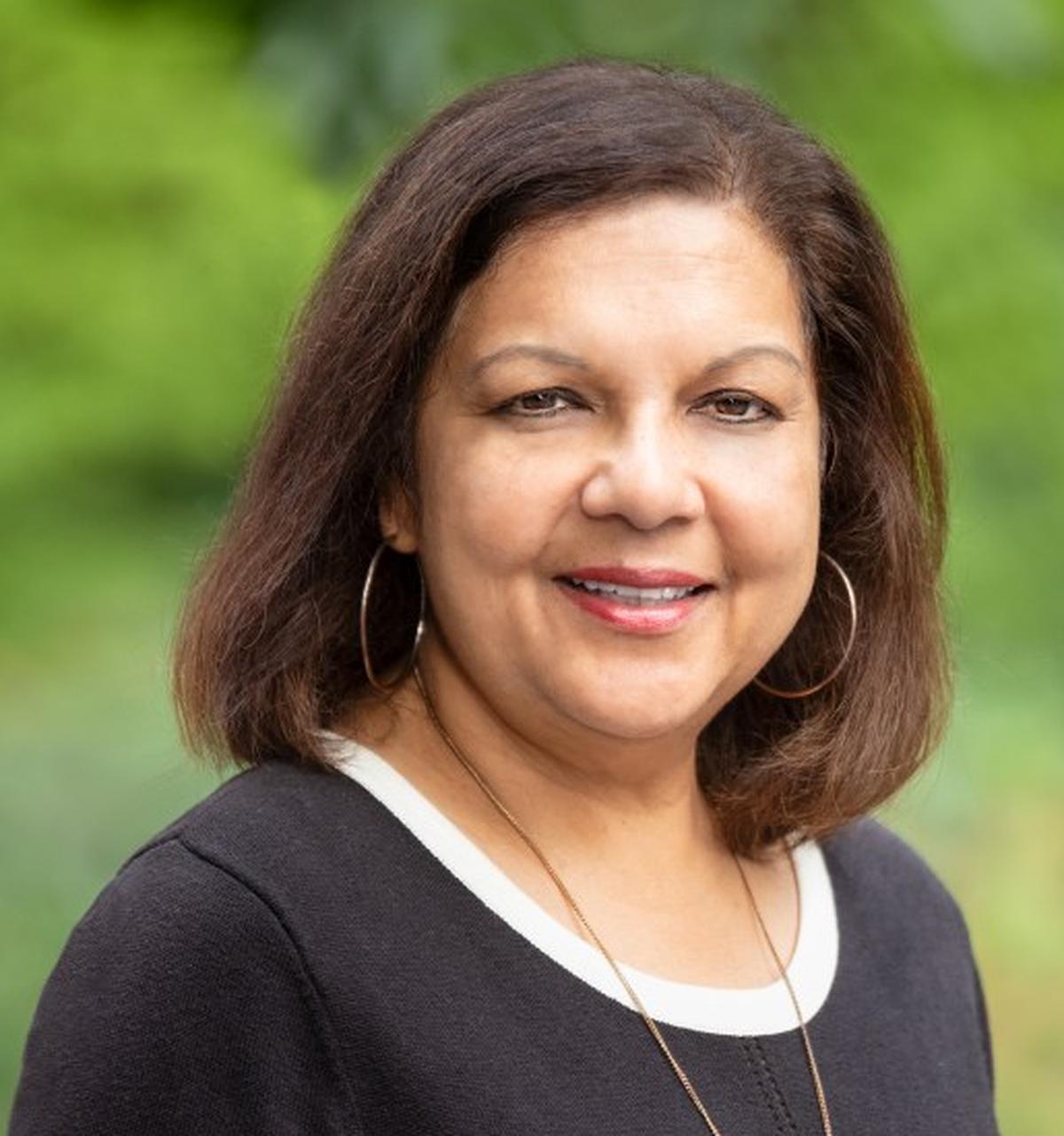

“A lot of students got nervous and self-deported. Who knows when they will be able to come back now. At the same time, there are others who are not leaving the U.S. for that very reason. It is a double-edged sword. They are afraid to go, they are afraid to stay.”Sonjui KumarChair of Board, Asian Americans Advancing Justice (one of the organisations advocating for students’ rights in Georgia)
Indian students have been hit the hardest
All these changes in the past few months, however, have not impacted all international students equally. Indian students, the largest single group of foreign students in the United States, have been hit especially hard. The American Immigration Lawyers Association estimates that 50% of those affected are from India.
In this climate of uncertainty, international students find themselves in the crosshairs. Kabir says there was no explanation given when his visa was revoked. “We were left to guess what the issue could be.” In some cases, visas were revoked because of a late fee payment, a long-forgotten speeding ticket, or an old address not updated in time. He remembers one Indian student who had his visa revoked because of a fine for catching the wrong-sized fish. “The most serious infraction by an Indian student that I came across was a DUI [driving under the influence],” says Kabir.
Normally, minor infractions don’t result in visa revocation, according to Atlanta-based Sarah Hawk, Partner & Chair of Immigration and Global Mobility at Barnes & Thornburg, a business law firm. In the case of these students, often the infractions happened a long time ago and were never proven.
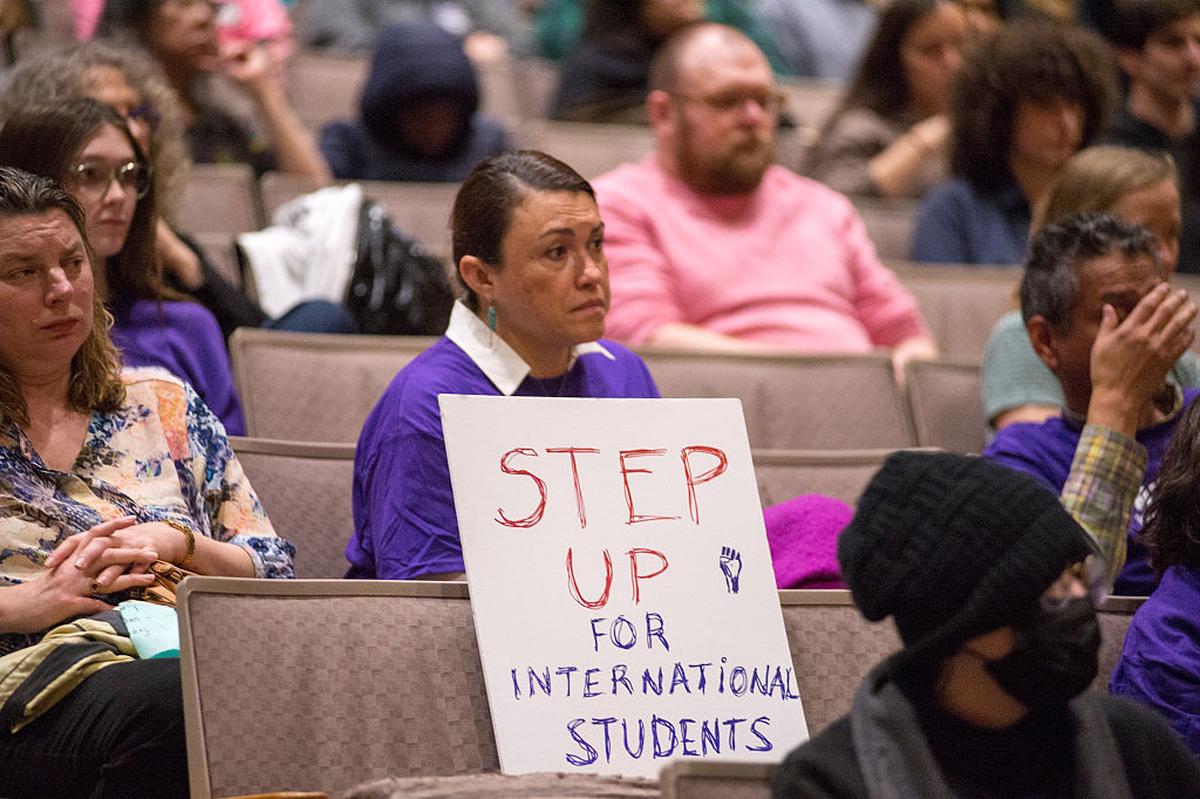
Northwestern University faculty and students at a protest gathering in April.
| Photo Credit:
Getty Images
“South Asians, of whom Indians are the largest number, tend to be more racially profiled,” says Kalpana V. Peddibhotla, Executive Director of California-based South Asian American Justice Collaborative.
“One of my clients, an Indian student, was once arrested on false allegations by a security officer at the mall. The police officer who arrested him found no evidence of wrongdoing. Yet, this student, who went on to graduate and do his OPT training, suddenly had his visa revoked after all these years. It has cost him his entire career, just as it is costing so many other students the same way,” she adds.
These crackdowns have also raised concerns about surveillance and due process. Suneeta Dewan, a New York-based immigration lawyer, says that social media vetting has left most students confused. “It’s very random, very arbitrary. Students are worried and are asking if they should self-deport. They don’t know what could get them into trouble.”
Kabir says he has not met any of the students whose visas were revoked because of social media posts. “People say they have gone underground.” In this atmosphere, for Kabir and other Indian students, even running everyday errands has turned into an act of vigilance. Every time they are outside and see a police car, someone always jokes, “Hey, is that ICE?” And then they all go quiet.
“This is being used not necessarily to vet out security threats, but to enforce an agenda of reducing the number of international students from India,” says Peddibhotla.
Susan Kerley, therapist and Clinical Director at Marietta Counseling for Children and Adults, Georgia, warns of life-altering trauma to students. “Imagine going through this as a young adult in a foreign country where you no longer know whom or what you can trust. The changing rules have created uncertainty, stress, and anxiety. The students haven’t changed; the rules have. It is disempowering,” she says.
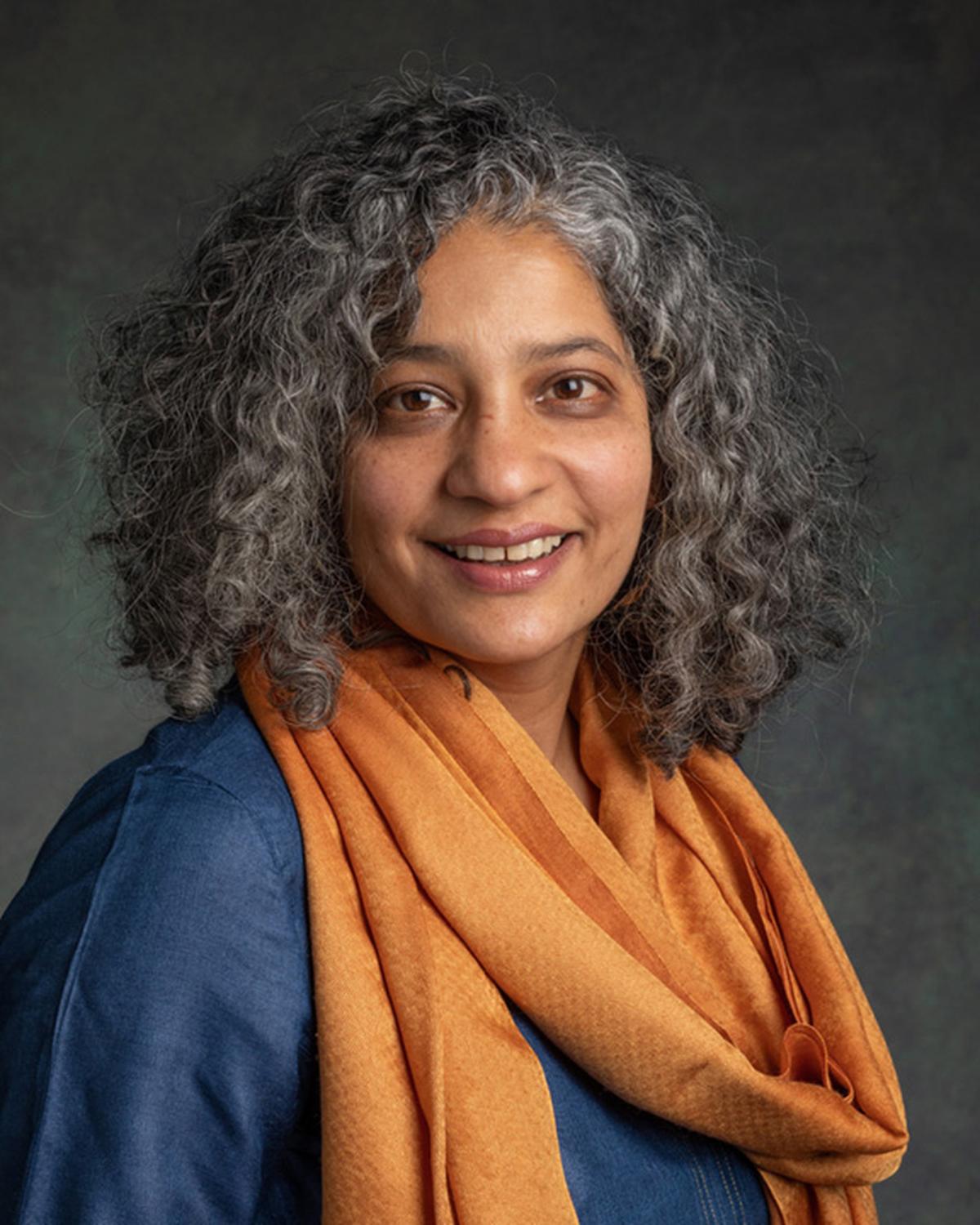

“I would encourage students to think of the history of visa — who is included and who is excluded in these parameters. I think of this as an opportunity to understand our relationship to history and to the civil rights movement .”Swati BakreMentor, The Family Institute at Northwestern University
Legal battlegrounds
Some students are actively resisting civil rights rollbacks. Nationwide, they have filed over 65 lawsuits, of which they have secured temporary relief in 35. In Georgia, for instance, 133 students had their visas reinstated.
Kabir is one of the students who got his visa reinstated in California. “It happened out of the blue. They said there had been a mistake.” He is still reeling from the impact of what had happened. “I was getting ready to leave the country. I had discussed who would take on my house sublease, who would get my furniture, who would take care of my plants. It was just a matter of boarding a flight,” he says.
But the struggle is far from over. “I can’t leave the U.S. for now,” says Kabir. Once a visa is revoked, even reinstatement does not guarantee re-entry. “Even though the courts have addressed the issue in some cases where the visas were revoked, if you have a student visa that was cancelled, you can’t leave and then come back,” says Nisha Karnani, Partner at Georgia-based Antonini & Cohen Immigration Law Group.
Kabir says there are many who did not get their visa reinstated. They packed in a hurry, booked the cheapest flight home, and were gone, leaving behind their hard work, their dreams, their investment.
Hawk’s business client had someone on a student visa who had his status revoked and had to leave for India. Later, he received a notification that they had made a mistake. But the damage had already been done. “Now he has to get another visa appointment and a visa stamp for F-1 to enter,” she says.

“South Asians, of whom Indians are the largest number, tend to be more racially profiled. This (the crackdown) is being used not necessarily to vet out security threats, but to enforce an agenda of reducing the number of international students from India.”Kalpana V. PeddibhotlaExecutive Director of California-based South Asian American Justice Collaborative
American Dream no more?
At over 27% — 4.2 lakh in total — Indians form the largest group of international students in the U.S., as per a 2024 report by the U.S. Immigration and Customs Enforcement.
Following the upheavals in the system, however, the picture seems to be changing dramatically. “I ran an analysis that compares SEVIS data from March 2024 and March 2025. The most dramatic shift is the 27.9% decline in Indian students,” writes Chris R. Glass, Professor of Practice in the Department of Educational Leadership and Higher Education at Boston College, on his Substack. That’s almost one lakh fewer Indian students who have chosen the U.S. as their education destination in 2025.
“There is a massive shift in the mentality of international students; they feel less comfortable coming to the U.S.,” says Soni of SAATH.
As Indians look to other countries for higher education opportunities, it’s not just a loss for students but also for the United States. “International students boost the U.S. economy,” reminds immigration attorney Karnani. According to College Board, a 120-year-old U.S.-based non-profit that pioneered the SAT and AP tests, the average tuition and fees for an undergraduate student are $30,780 in public institutions and $43,350 in private institutions, not including the standard cost of living of $10,000-$25,000 per year.
During the 2023-24 school year, 1.1 million international students contributed nearly $44 billion to the U.S. economy, as per NAFSA: Association of International Educators. At 27%, Indian students contributed almost $12 billion to that amount. Not only do the students bring in money, they also produce some of their best work here. “International students are a huge part of industry and innovation in the country,” says Kesubhai.
Emerging as new favourites among Indian students are France, New Zealand, Germany, Bangladesh, Russia, Ireland, and Uzbekistan, according to a report by Arpan Tulsyan, Senior Fellow at the Observer Research Foundation. She writes, “For Indian middle-class families, sending a child to the U.S. involves several years of savings — with costs ranging between ₹3.5 million and ₹5 million annually. Any uncertainty for visa approval or the work authorisation process turns U.S. education into a high-risk investment, significantly altering the family’s cost-benefit analysis.”
Learnings from a crisis
The visa ban may be legally contested, but the intent behind it lingers as the aftershock of a political earthquake. Swati Bakre is a trauma-informed clinician. She is also an educator and mentor at The Family Institute of Northwestern University. She says, “I would encourage students to think of the history of visa — who is included and who is excluded in these parameters. I think of this as an opportunity to understand our relationship to history and to the civil rights movement because the present moment does not stand in isolation from the past.”
For international students, their futures are held hostage to an ideological war they did not start. A war that is no longer just about policy. It is about who gets to belong. Who gets to learn. Who gets to dream in a language not their own. It is also about the purpose of education in America and whether institutions like Harvard can continue to be spaces for freedom, debate, and plurality in a time when those very ideals are being recast as threats.
Bakre says, “I would like to validate the anxiety that these students are feeling. But I would also ask them to take perspective, realign, and think of the best way to make an impact in this world. This crisis could be an opportunity for them to be really conscious of what they want to do and why, what they are looking for from an education in the U.S., and whether their goals are being met in this environment.”
Kabir says his mother breaks down on every phone call. “My family background is in the Indian Navy. I get support from my brother and father. But it’s hard for my mother. My nephews and nieces also tell me, ‘Come home, Chachu’.” But it will be a while before Kabir can come home to his family.
In this environment, the waiting room has shifted. It is no longer outside the U.S. embassy in Delhi or beneath the blinking screens at JFK International Airport. It now resides inside the body. Indian students in the United States know this space well. It follows them from campus hallways to summer sublets.
They wait. For visa reinstatements. For legal appointments. For someone in the administration to see them not as a number but as a name. They wait to be home as they dream of an Indian summer while being stuck on American soil. They wait for mango season and for a world that will let them taste it.
The writer is a USC Annenberg Fellow for Writing and Community Storytelling, and deputy editor of the U.S.-based Khabar magazine.